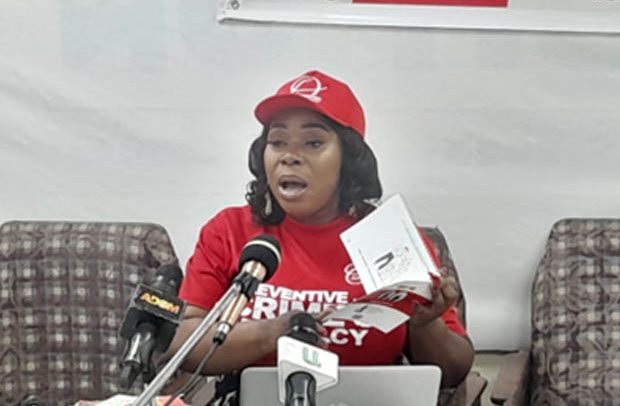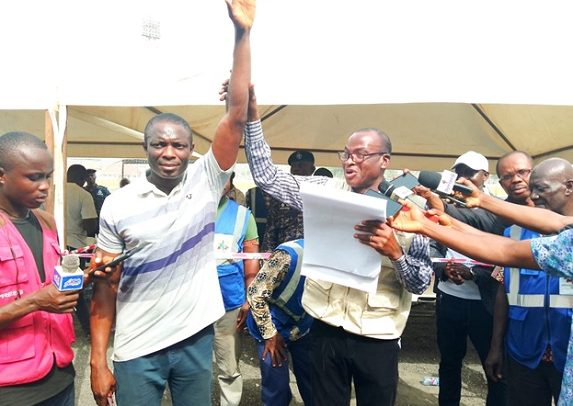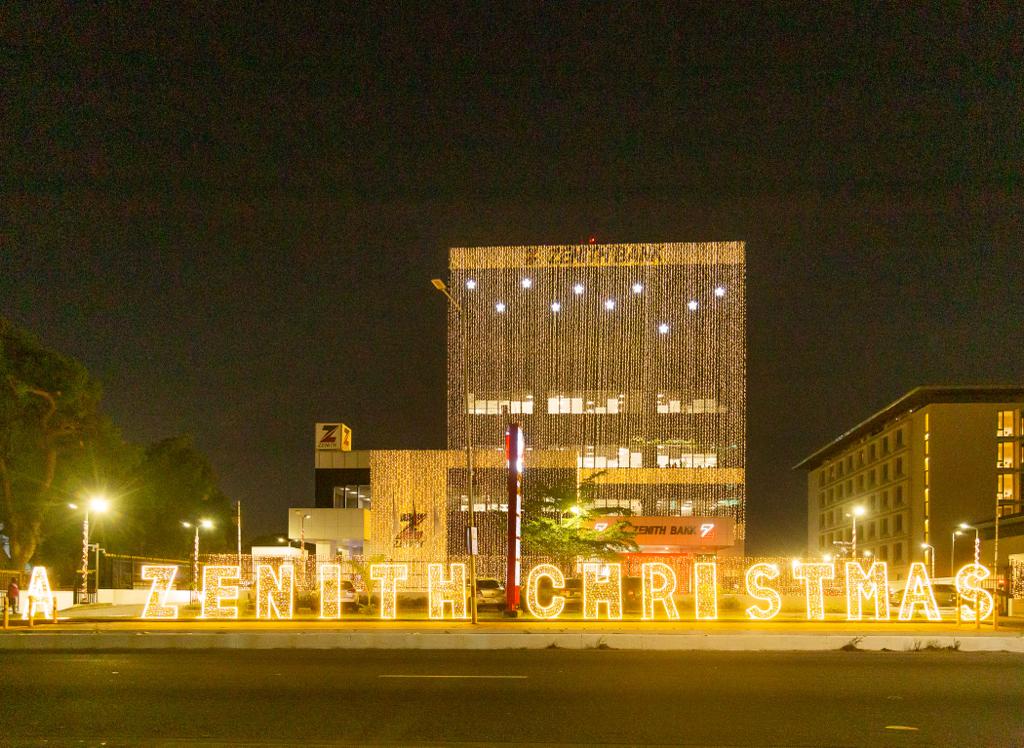
The calendar showed Thursday, February 8, 2024; the clocks edged towards 6:15 pm, and the weather reflected harmattan with the air filled with dry, dusty breezes traveling across the Kotoka International Airport.
The airport was preparing for its own nightlife, marked by people hurrying along, dragging their luggage behind them, wheels whistling against the tiled floors, while the airport’s announcements blasted through the speakers.
Albeit this scene of arrivals and departures is commonplace at airports worldwide that particular night presented a rare migration contrast.
The contrast
At the terminal 3 departure hall, some excited Ghanaians embarking on journeys to Europe and other parts of the world in search of greener pastures, hugged their loved ones tightly, sharing tears of joy and anticipation as they stepped into the unknown, making promises to stay in touch and be careful.
On the other side, the domestic arrival hall was witnessing a somber homecoming. A group of 143 Ghanaian migrants, once hopeful seekers of better fortunes in Libya, were returning home on a chartered flight.
They were not received by family but by International Organisation for Migration (IOM) officials and government representatives who had facilitated their journey back to their motherland.
As they were setting foot back on Ghanaian soil, they were stepping back into a reality they had hoped to leave behind—a reality filled with broken dreams and the daunting task of starting over.
Migration Landscape
Migration, a prevalent aspect of human history, takes various forms such as internal or international, voluntary or forced, driven by economic, political, and environmental factors. In 2020, Ghana received an estimated $4.3 billion in remittances, demonstrating the potential benefits of migration when managed effectively.
However, recent trends indicate a growing number of Ghanaians, especially the youth, seeking opportunities abroad. The 2021 Population and Housing Census shows that the number of Ghanaian migrants increased to 293,416 from 250,624 recorded in 2010.
The majority of emigrants, primarily young adults from rural areas, are drawn to destinations in Europe, America, and within Africa, notably within ECOWAS countries.
Voluntary Return Assistance
While numerous Ghanaian youths are departing the country, there is also a wave of those who had previously left now returning. Data sourced from the IOM indicate that the 143 returnees are part of 5,142 Ghanaians who have willingly returned since 2017 under IOM’s Voluntary Humanitarian Return Assistance Programme.
Last year, the IOM, supported by the Migrant Protection, Return, and Reintegration Programme for Sub-Saharan Africa (MPRR-SSA), funded by the European Union, facilitated the safe return of 629 Ghanaians from Libya. That country offers routes to Europe thus the huge interest.
The 143
Draped in warm clothing, the 143 returnees, consisting of 137 men, six women, and five children, bore visible signs of resilience. Among them, 21 faced moderate medical conditions, including two individuals who were wheelchair-bound, and one grappling with blindness.
Before their odyssey to Libya, mostly through unapproved routes, these returnees lived at areas, including Dormaa, Kintampo, Kumasi, and Accra.
Earlier scheduled to land at 3:30 pm, the flight suffered about three-hour delay, attributable to poor weather. Within the domestic arrival hall, an assembly of officials from IOM, Ghana Health Service, NADMO, journalists, and other stakeholders waited in anticipation for the homecoming.
Meticulously arranged white chairs within the hall, reminiscent of a medical screening setting, awaited the returnees’ arrival, attracting the attention of Domestic travelers who had arrived from Tamale and Kumasi.
Musical welcome
Inside another hall the air resonated with the soulful notes of Ghanaian classics like “Welcome home” and “Woyaya” by Osibisa, providing the perfect backdrop to the welcome ceremony.
Outside, amidst the harmattan wind, the IOM team, led by the esteemed IOM Ghana Chief of Mission, Ms. Fatou Diallo Ndiaye, and Deputy Minister of Youth and Sports, Evans Opoku Bobie, stood steadfast to welcome them.
As the 143 individuals arrived, a sense of nostalgia and delight rippled through them, unleasing cheers for musician Kofi Kinaata, an IOM Ghana Goodwill Ambassador, who stood by to extend a warm welcome.
Fresh start, not failure
In her welcome address, Ms. Ndiaye urged them to view their return as a fresh start, not a failure, assuring that IOM and its partners would provide robust support to aid their reintegration and help them restart their lives.
“It is not a wrong decision to come back. We should be proud of you, and you should be proud of yourself for returning despite all the investment and challenges you have faced,” she said.
Mr. Bobie extended a warm welcome on behalf of the government and assured them of support to explore various economic opportunities to get back on their feet and meet their socioeconomic needs.
“It doesn’t matter how you got there. What matters now is that you’re back home safely. The government is not against migration but encourages regular migration due to the benefits it brings to the country,” he said.
For Kofi Kinaata, he emphasised that their lives were worth more than any risky journey for money, and now that they were back in one piece, they have the opportunity to make a successful life.
A returnee’s appeal
In an interview, a 2022 returnee (name withheld), who narrated how he did menial jobs to survive in Libya , made a shocking revelation that most of his cohort members who were brought back home had returned to Libya and other places to attempt another shot at life.
For someone who has also made a number of trips abroad and back in search of better opportunities, he appealed to the government to address unemployment as it was the underlying cause of irregular migration.
Address the cause
His call is in order. The government can address this root cause of migration by focusing on job creation, skills development, supporting small businesses and implementing social programmes to creating a more sustainable environment.
International collaboration would help foster comprehensive efforts to address the root causes and encourage economic growth, reducing the necessity for youth migration.
Assistance
After the brief welcome ceremony, the returned migrants were scheduled to receive psychological first aid and undergo mental health screenings to assess the need for further assistance and possible referrals.
Essential items such as food, water, hygiene kits, were on standby with a promise that cash for immediate needs, as well as transportation to the main areas of return across the country would be provided.
Additionally, the IOM and partners had promised to support the migrants in developing comprehensive reintegration plans that address economic, social, and psychosocial needs.
New beginnings
At about 9 pm when journalists were departing the airport to end an exhaustive day, the IOM officials and other officials were starting what promised to be a long night—a night of knitting the fabric of broken dreams back together and —a night of planting the seeds of hope and renewal in hearts that had journeyed far.
As the nightlife of the airport intensified, with many of those departing the country waiting at the boarding gate, the harmattan-laden wind that roamed Accra served as a silent witness to the resilience of the human spirit, to the enduring quest for home, and to the undying belief in new beginnings.
BY JONATHAN DONKOR
The post THE NIGHT THEY RETURNED: A MIGRATION CONTRAST appeared first on Ghanaian Times.
Read Full Story

























Facebook
Twitter
Pinterest
Instagram
Google+
YouTube
LinkedIn
RSS